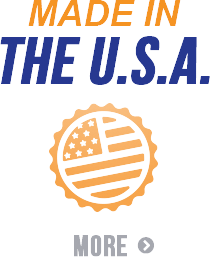
Much has been said on the correlation between productivity and satisfaction at work. There are many studies right now on the shift in Generation X, Millennials, and Generation Z workforce, focusing on work life balance, and weighing the importance of workplace satisfaction with more traditional selling points like salary and benefits (health insurance, investments, retirement plans, etc). There has been a surge in less traditional benefits, which are seen as enticing reasons to choose to work (or stay) someplace when the position is similar to elsewhere. Some benefits that contribute to workplace satisfaction include:
- Schedule flexibility
- Office culture
- Meaningful work and making a contribution
- Comfort and ergonomics
- Continuing education and advancement opportunities
- Health and fitness
- Social opportunities to form friendships at work
- And so many more
To read more about trends that Millennials are looking for in employment and how to appeal in job posting ads, read the Gallup article “What Millennials Want From Work and Life.” Simply put, “Millennials are pushing for change in the world — including in the marketplace and the workplace. They don’t accept ‘that’s the way it has always been done’ as a viable answer.”
With the unemployment rate so low, finding good candidates is a challenge. Many companies and organizations are being forced to look inward at their culture and articulate what makes their job opportunities more attractive. Companies are also putting more emphasis on retaining good employees once they are hired. Looking at the correlation between happy employees and their productivity has been the focus of many studies.
As cited in the study “Impact of Working Environment on Job Satisfaction” published by Abdul Raziq and Raheela Maulabakhsh at the 2nd Global Conference on Business, Economics, Management, and Tourism in Prague, Czech Republic, “To meet the standards of organization, employees need a working environment that allows them to work freely without problems that may restrain them from performing up to the level of their full potential….Further they described the second dimension of job satisfaction known as context comprises of the physical working conditions and the social working conditions.”
If people accept positions offered to them based on what they perceive is important, the stage is set for finding happiness in the workplace. It’s up to company leaders and HR departments to listen to the needs of staff and respond in a way that allows them to feel heard.
When employees are happy, align themselves to the company’s values, and make a meaningful contribution to the team, it paves the way for heightened productivity and achieving company goals. As mentioned in Forbes, “Why Your Employees’ Happiness Matters — And What To Do About It” by Eric Siu, “employees are most satisfied and productive when their four core needs are met. These are physical, emotional, mental and spiritual needs. The good news is that satisfying just one need of the four can improve performance.”
As a company that specializes in ergonomically designed office furniture, we work to improve happiness in the workplace. We also work with government agencies to provide CAP approved furniture (the TaskMate Executive 6100 and the TaskMate Journey 6200) to many government employees who’ve requested assistance through their Human Resources department. HealthPostures is your resource for helping answer any questions you have about finding the right ergonomic desks and chairs for staff to improve satisfaction at work. If your employees are inquiring about the benefits of office mobility, please reference HealthPostures to answer any questions you have.






